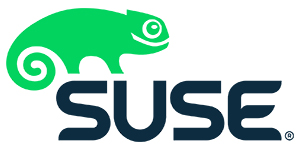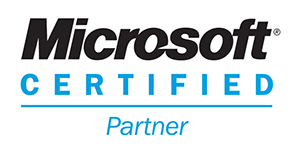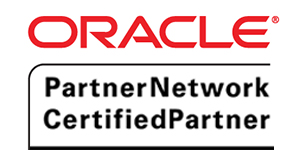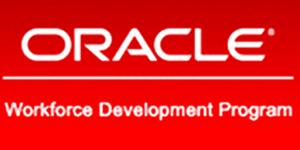
Online
20 horas lectivas y guiadas por el Instructor. 2 fines de semana.
Horario: Viernes de 16:00 a 21:00 y Sábados de 09:00 a 14:00h.
Modalidad Abierta
Te presentamos el Curso Fundamentos de Agile Scrum, la forma Agile de pensar es bien conocida en el campo del desarrollo de software, pero los principios, cada vez más, se aplican en otros tipos de proyectos.
Scrum es la metodología ágil más utilizada y es adecuada para todos los profesionales que buscan mantener sus conocimientos al día con los últimos avances en los campos de la informática y gestión de proyectos, en especial aquellos que lideran o participan en proyectos.
En particular, la certificación es adecuada para los profesionales que trabajan en las áreas de: Gestión de proyectos, desarrollo de software, Gestión de Servicios de TI y Gestión de Empresas.
EXIN Agile Scrum Foundation es una certificación que valida los conocimientos de un profesional relativos a la mezcla de las metodologías ágiles y las prácticas de Scrum.
Con Agile Scrum se trata de trabajar juntos para alcanzar con éxito el objetivo. Las Metodologías ágiles son populares en los enfoques de desarrollo de software y cada vez más se están utilizando en otras áreas.
Prácticas de Scrum incluyen el establecimiento de equipos multifuncionales y autogestionados, produciendo una entrega de trabajos al final de cada iteración o Sprint.
El examen EXIN Fundación Agile Scrum es parte del programa de cualificación EXIN y ha sido desarrollado en cooperación con expertos internacionales en la materia.
Certificación
El programa proporciona la formación necesaria para presentarse a los exámenes de certificación: ASF EXIN Agile Scrum Foundation.
Otras prestaciones
- Un ordenador por persona.
- Posibilidad de hacer prácticas en aula
EXIN Agile Scrum Foundation certificate
1. Introduction to Agile and Scrum
1.1. Concepts of Agile and Scrum
1.1.1. Explain why Agile methodologies are important and how they add value
1.1.2.Describe Agile manifesto and principles
1.1.3. Explain the Agile project management framework
1.2. Other Agile methodologies
1.2.1.Name all the other Agile methodologies that are prevalent out there
1.2.2. Describe characteristics of Crystal, FDD, DSDM, XP and AUP, and how they differ from Scrum.
2. Scrum practices
2.1. Important roles
2.1.1.Explain the Product owner role
2.1.2. Explain the Scrum master role
2.1.3.Explain the Scrum team role
2.1.4. Explain the manager role in Scrum
2.1.5. Explain how some of the other roles (e.g. technical architect) play out in Scrum and how they can contribute.
2.2. The rituals and time-boxing
2.2.1. Explain the characteristics of Time-boxing
2.2.2. Explain the characteristics of Sprints
2.2.3. Explain the characteristics of the daily stand-up
2.2.4. Explain the characteristics of the Sprint review
2.2.5. Explain the characteristics of the Sprint retrospective
2.3. The importance of a backlog
2.3.1.Explain the characteristics of a backlog
2.3.2. Write good requirements, do's and don'ts for the product owners
2.3.3. Split stories
2.4. 2.4 Scrum methods and practices
2.4.1. Describe the principles of refactoring, pair programming and continuous integration
2.4.2. Explain the value of Configuration management
2.4.3. Tell the difference between Agile testing and testing on conventional projects
2.4.4. Defend the value of Test-driven-development
2.4.5. Define when a Sprint, Story and a Release is really done
3. Scrum planning
3.1. The concept of light-weight, flexible plans
3.1.1. Defend the value of Responding to change versus following a plan
3.1.2.Plan at multiple levels: Daily, Sprint, Release, Product, Portfolio
3.1.3. Describe a high-level roadmap for Release planning
3.1.4. Plan Sprints for the next few weeks of activity
3.2. How to get to a reliable estimate
3.2.1.Name the first principles about estimation
3.2.2. Distinguish types of estimates
3.2.3. Define Units of measure for size
3.2.4. Describe techniques of estimation
4. Monitoring Scrum projects
4.1. The importance of monitoring
4.1.1.Name the first principles of monitoring
4.1.2. Indicate metrics used in Scrum
4.1.3. Justify commonly used charts in Scrum
4.1.4. Describe how to create information radiators
5. Advanced Scrum concepts
5.1. Scrum in different situations
5.1.1. Describe how to apply Scrum to large projects with complex inter-dependencies
5.1.2. Describe how to apply Scrum to "maintenance projects"
5.1.3. Describe Scrum in distributed teams: What works and what does not
5.1.4. Explain how contracts and fixed price projects can be tailored for Scrum
5.1.5.Explain how to transition teams or projects to Scrum
Profesorado
Profesionales con amplia experiencia en consultoría de sistemas de información.















